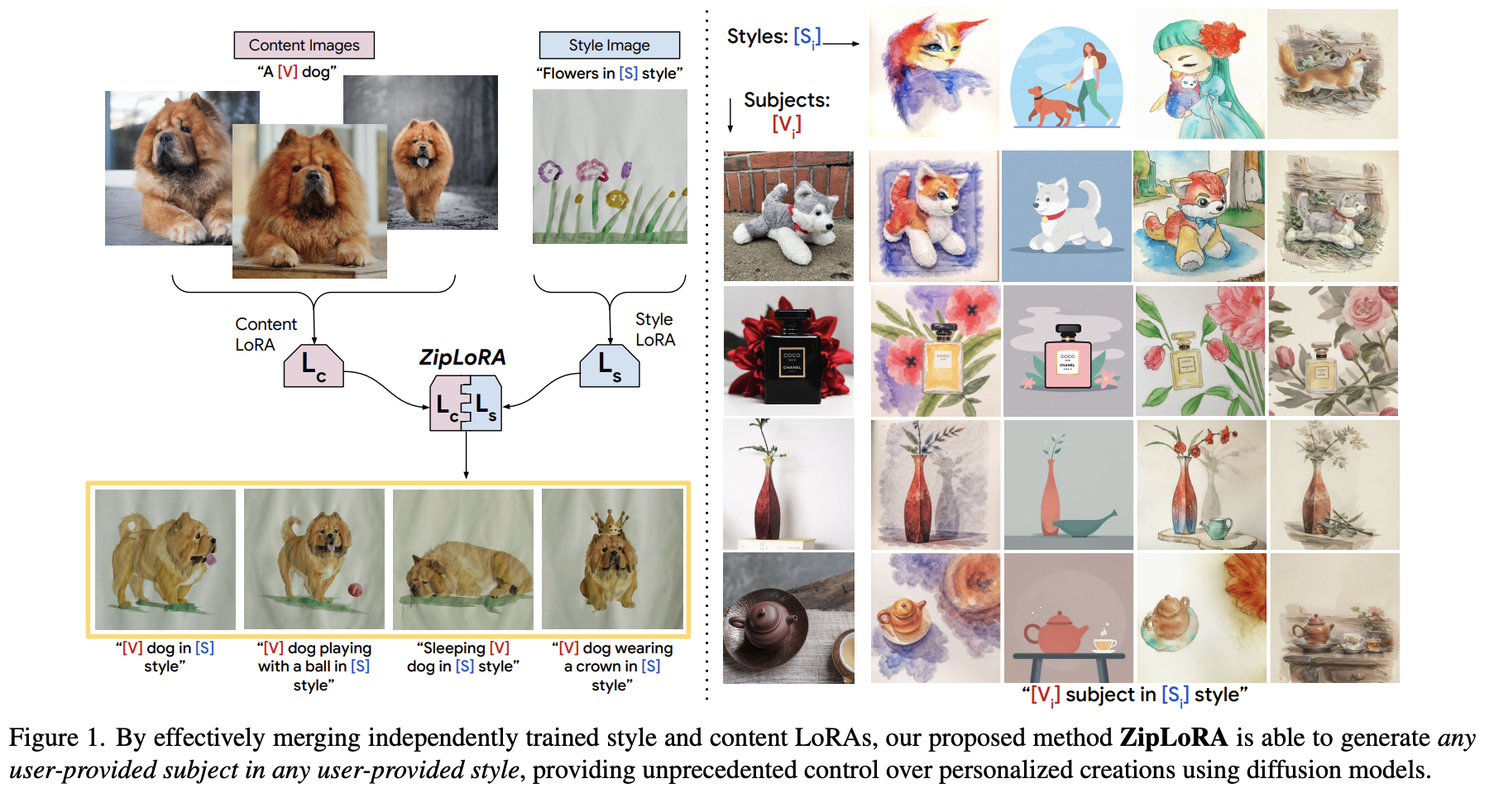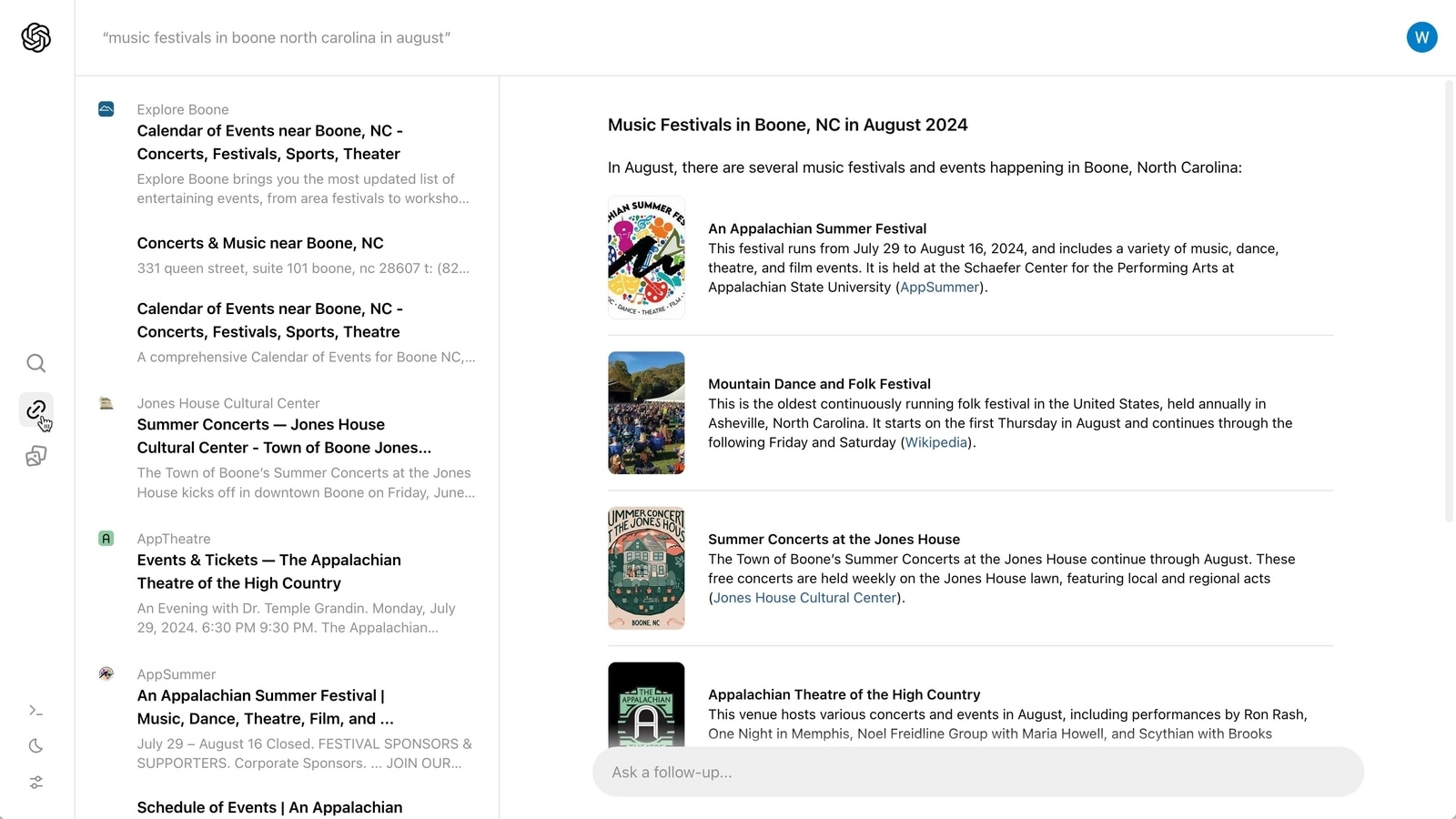Researchers from Google Research and UIUC propose ZipLoRA, which addresses the issue of limited control over personalized creations in text-to-image diffusion models by introducing a new method that merges independently trained style and subject Linearly Recurrent Attentions (LoRAs). It allows for greater control and efficacy in generating any matter. The study emphasizes the importance of sparsity in concept-personalized LoRA weight matrices and showcases ZipLoRA’s effectiveness in diverse image stylization tasks such as content-style transfer and recontextualization.
Existing methods for photorealistic image synthesis often rely on diffusion models, such as Stable Diffusion XL v1, which use a forward and reverse process. Some ways, like ZipLoRA, leverage independently trained style and subject LoRAs within the latent diffusion model to offer control over personalized creations. This approach provides a streamlined, cost-effective, and hyperparameter-free subject and style personalization solution. Compared to baselines and other LoRA merging methods, demonstrations have shown that ZipLoRA’s practice excels in generating diverse subjects with personalized styles.
Generating high-quality images of user-specified subjects in personalized styles has challenged diffusion models. While existing methods can fine-tune models for specific concepts or techniques, they often need help with user-provided subjects and styles. To address this issue, a hyperparameter-free method called ZipLoRA has been developed. This method effectively merges independently trained style and subject LoRAs, offering unprecedented control over personalized creations. It also provides robustness and consistency across diverse LoRAs and simplifies the combination of publicly available LoRAs.
ZipLoRA is a method that simplifies merging independently trained style and subject LoRAs in diffusion models. It allows for subject and style personalization without the need for hyperparameters. The technique uses a direct merge approach involving a simple linear combination and an optimization-based method. ZipLoRA has been demonstrated to be effective in various stylization tasks, including content-style transfer. The process allows for controlled stylization by adjusting scalar weights while preserving the model’s ability to correctly generate individual objects and styles.
ZipLoRA has proven to excel in style and subject fidelity, surpassing competitors and baselines in image stylization tasks such as content-style transfer and recontextualization. Through user studies, it has been confirmed that ZipLoRA is preferred for its accurate stylization and subject fidelity, making it an effective and appealing tool for generating user-specified subjects in personalized styles. The merging of independently trained style and content LoRAs in ZipLoRA provides unparalleled control over personalized creations in diffusion models.
In conclusion, ZipLoRA is a highly effective and cost-efficient approach that allows for simultaneous personalization of subject and style. Its superior performance in terms of style and subject fidelity has been validated through user studies, and its merging process has been analyzed in terms of LoRA weight sparsity and alignment. ZipLoRA provides unprecedented control over personalized creations and outperforms existing methods.
Check out the Paper and Github. All credit for this research goes to the researchers of this project. Also, don’t forget to join our 33k+ ML SubReddit, 41k+ Facebook Community, Discord Channel, and Email Newsletter, where we share the latest AI research news, cool AI projects, and more.
NEW|NEW|NEW|NEW|NEW|NEW|NEW|NEW|NEW|NEW|NEW|NEW|NEW|NEW|
NEW|NEW|NEW|NEW|NEW|NEW||NEW|NEW|NEW|NEW|NEW|NEW|NEW|NEW|
NEW|NEW|NEW|NEW|NEW|NEW|NEW|NEW|NEW|NEW|NEW|NEW||NEW|NEW|
Sana Hassan, a consulting intern at Marktechpost and dual-degree student at IIT Madras, is passionate about applying technology and AI to address real-world challenges. With a keen interest in solving practical problems, he brings a fresh perspective to the intersection of AI and real-life solutions.










